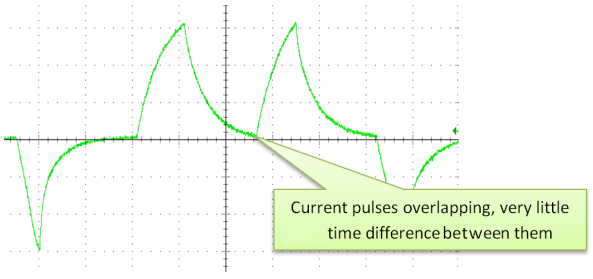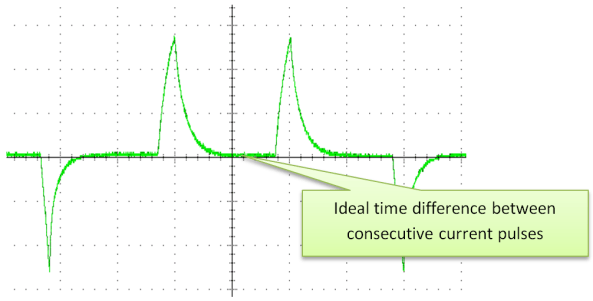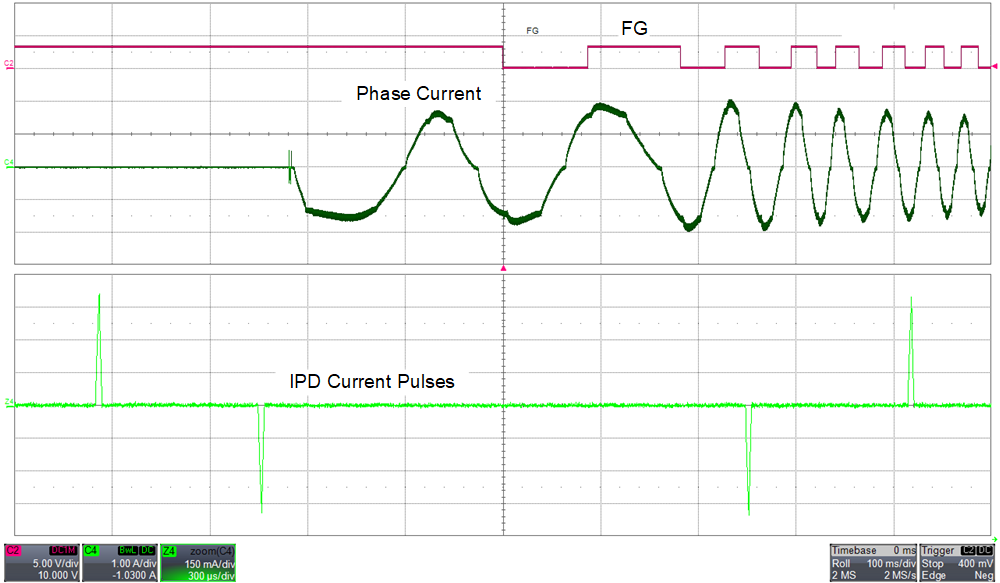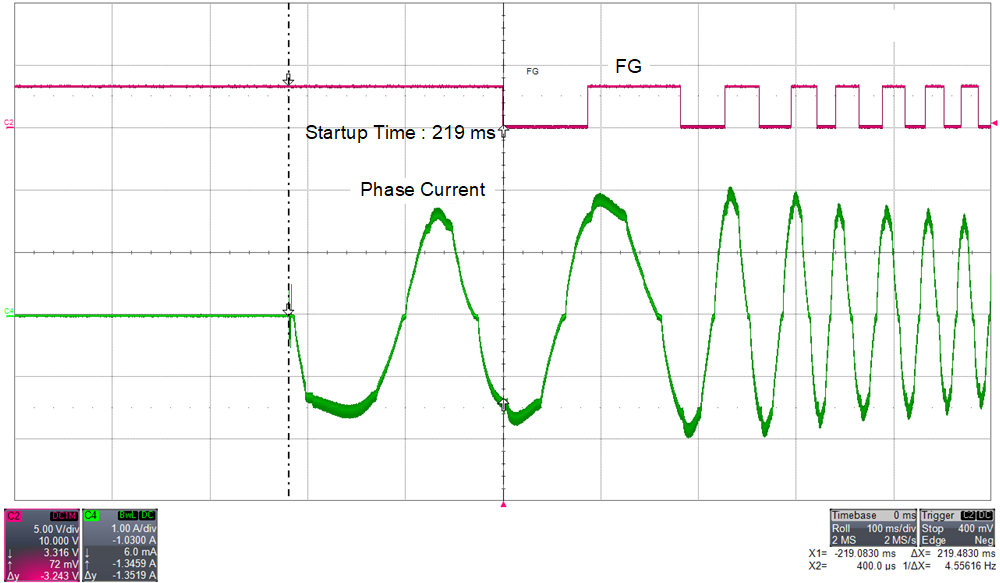SLLA575 June 2022 DRV10987 , MCF8316A , MCT8316A
2.1.2 Initial Position Detect (IPD)
Initial Position Detection (IPD) method determines the initial position of the motor using the spatial variation in the motor inductance. IPD operates by sequentially applying six different phase voltage patterns. When the current through a particular phase pattern reaches the programmed threshold, the MCF8316A stops driving the particular phase pattern and measures the time taken from the start of the voltage that was applied to that particular phase pattern to the time that the current through the phase pattern reached the current threshold. This time varies as a function of the inductance in the motor windings. The state with the shortest time represents the state with the minimum inductance. The minimum inductance is because of the alignment of the north pole of the motor with this particular driving state.
Below are the dominant parameters that impact startup time during IPD. Open loop parameters are discussed in Section 2.1.1.
- IPD current threshold [IPD_CURR_THR]
- IPD release mode [IPD_RLS_MODE]
- IPD Clock frequency [IPD_CLK_FREQ]
- IPD repeating times [IPD_REPEAT]
Figure 2-4 shows the IPD current pulses along with the above four parameters labeled in the plot.
Follow the below steps to minimize the motor startup time during IPD operation.
- Configure the IPD current
threshold [IPD_CURR_THR] to a value closer to the rated current of the motor.Note: If the motor vibrates or spins in reverse direction, it is recommended to decrease the IPD current threshold.
- Configure IPD release mode
[IPD_RLS_MODE] to Tri-state or Hi-Z as the phase current has a faster
settle-down time.Note: Setting the IPD release mode to Tri-state can result in a voltage increase on VM. The user must manage this with an appropriate selection of either a clamp circuit or by providing sufficient capacitance between VM and GND to absorb the energy.
- Increase the IPD Clock frequency
[IPD_CLK_FREQ] until there is no overlapping between consecutive IPD current
pulses as shown in Figure 2-6. IPD current should settle down completely before starting of the next pulse.
Figure 2-6 shows an example of IPD current pulses with ideal time difference between the
pulses. Figure 2-5 shows an example of an unsettled IPD current pulse where the consecutive
current pulses overlap.
 Figure 2-5 Overlapping IPD
Current Pulses
Figure 2-5 Overlapping IPD
Current Pulses Figure 2-6 IPD Current Pulses
Showing Ideal IPD Clock FrequencyNote: Motor with high inductance and high current thresholds require longer time for the current to settle down. For such motors, it is recommended to set a lower IPD frequency. Setting a lower IPD frequency makes IPD noise louder and increases the motor startup time.
Figure 2-6 IPD Current Pulses
Showing Ideal IPD Clock FrequencyNote: Motor with high inductance and high current thresholds require longer time for the current to settle down. For such motors, it is recommended to set a lower IPD frequency. Setting a lower IPD frequency makes IPD noise louder and increases the motor startup time. - Configure IPD repeating times
[IPD_REPEAT] to 1.
Figure 2-7 shows the FG and phase current of a BLDC motor. FG is configured to output pulses in closed loop. This is to know exactly at what point the motor enters closed loop. The bottom half of the figure shows the phase current that is zoomed to show the IPD current pulses. Figure 2-8 shows the time taken for the BLDC motor to enter closed loop which is 219 ms.
 Figure 2-7 Phase Current and FG
During IPD
Figure 2-7 Phase Current and FG
During IPD Figure 2-8 Time Taken to Enter
Closed Loop in IPD
Figure 2-8 Time Taken to Enter
Closed Loop in IPD